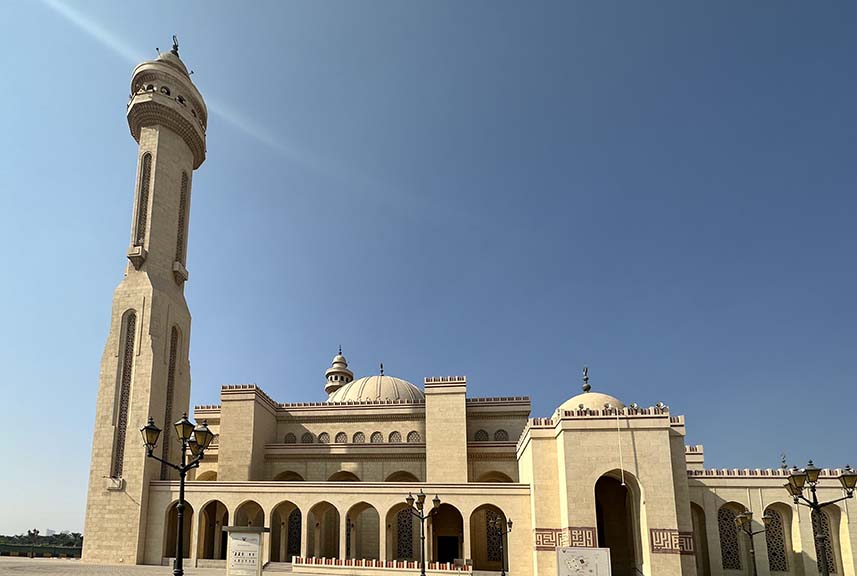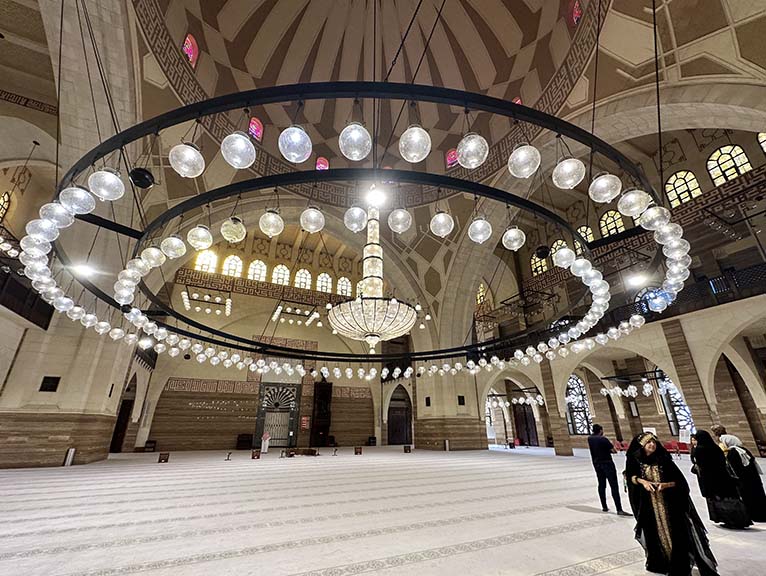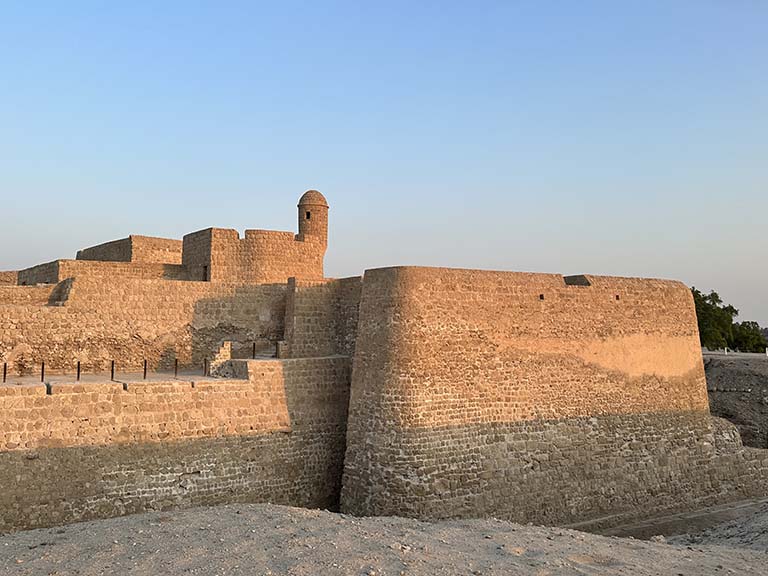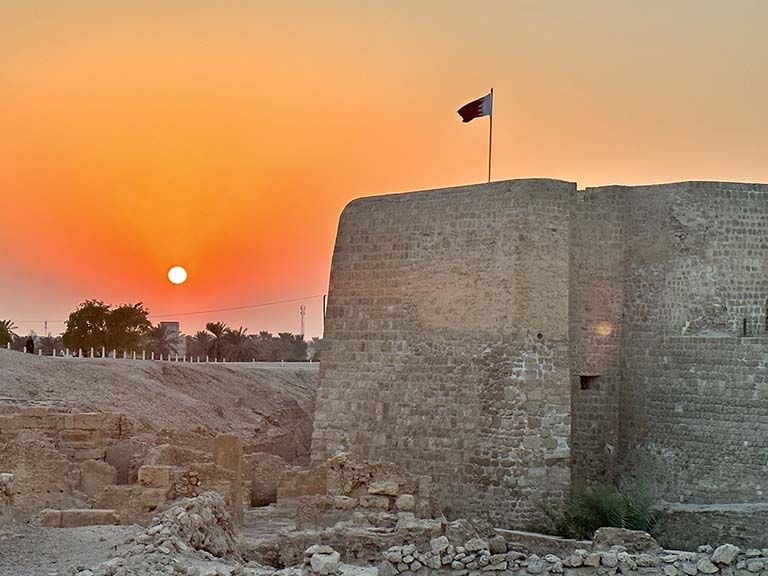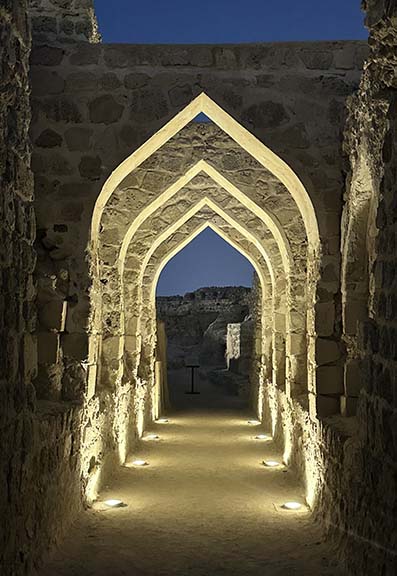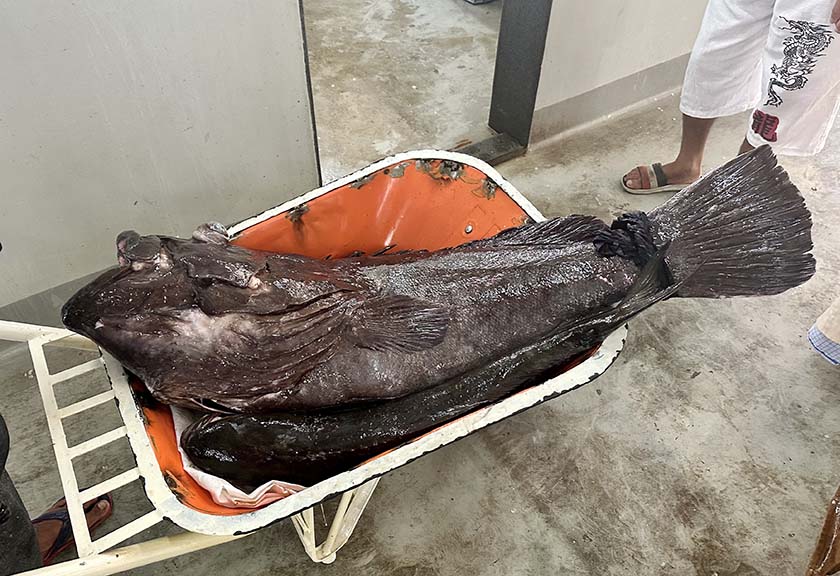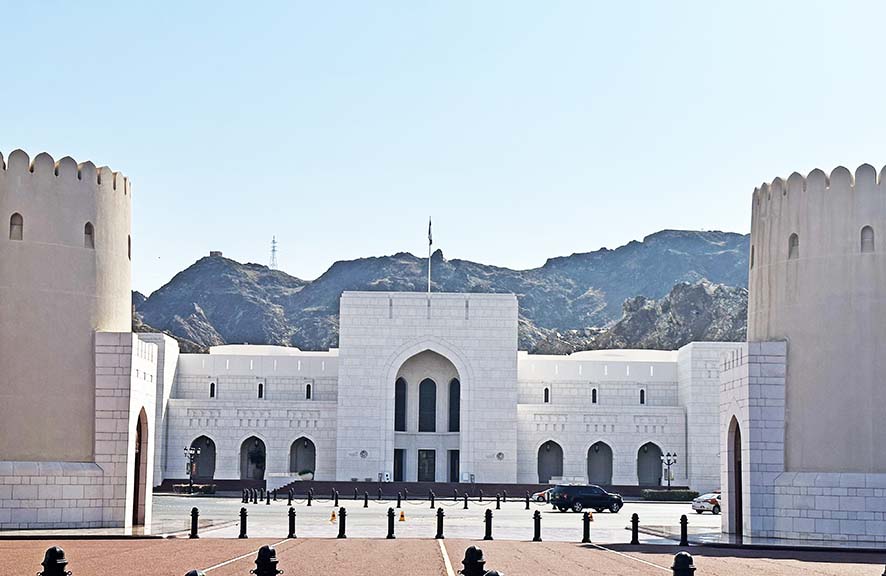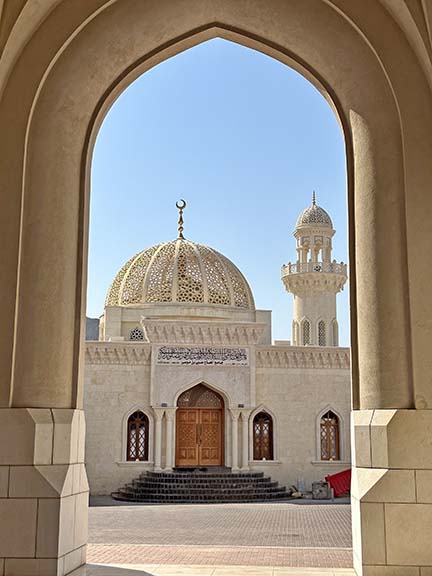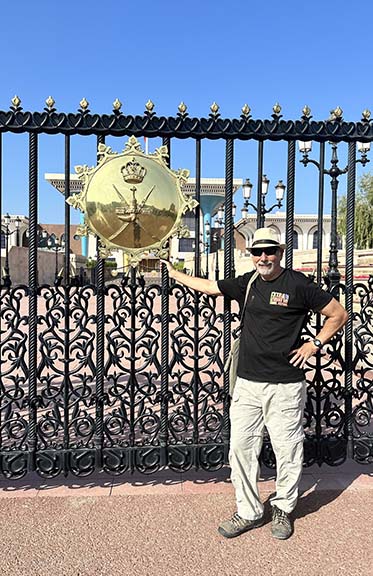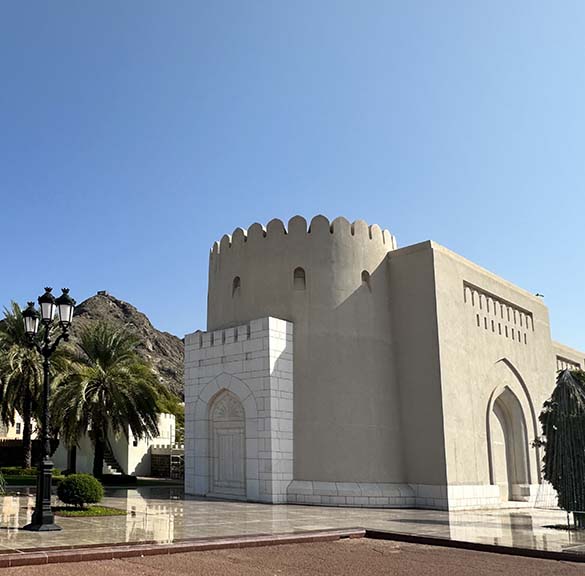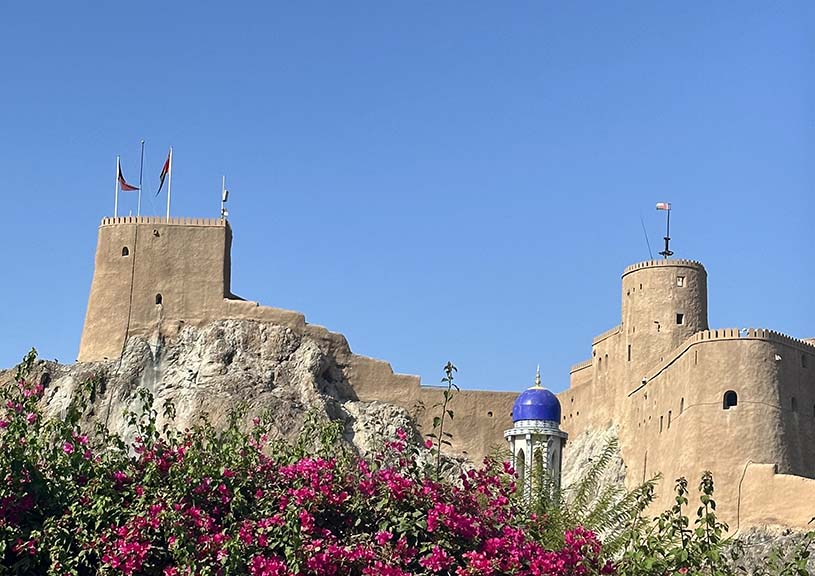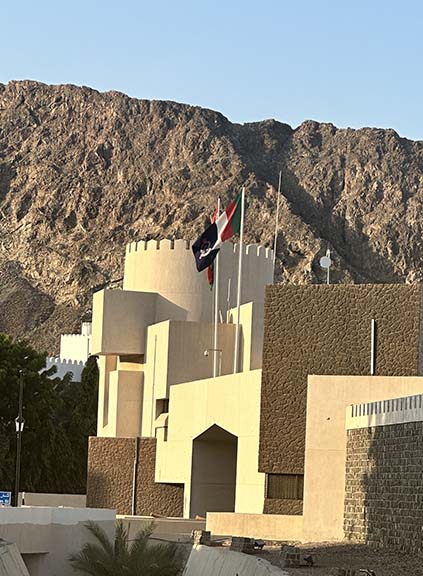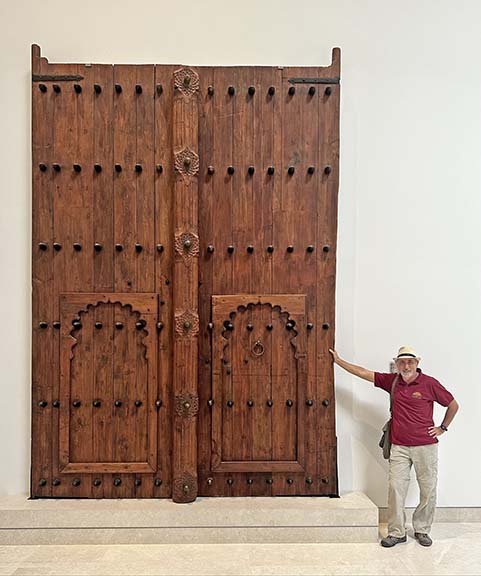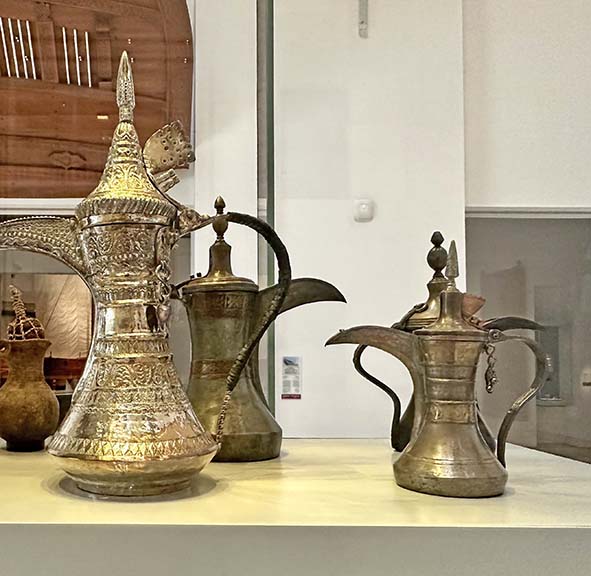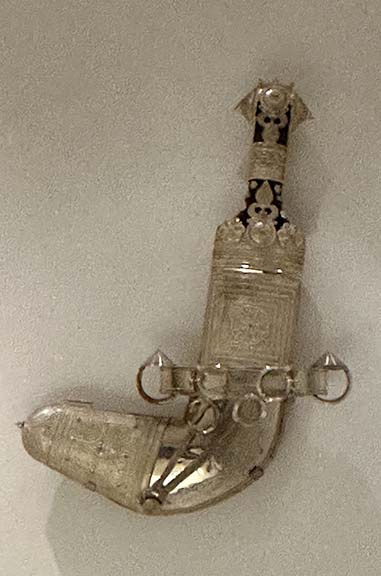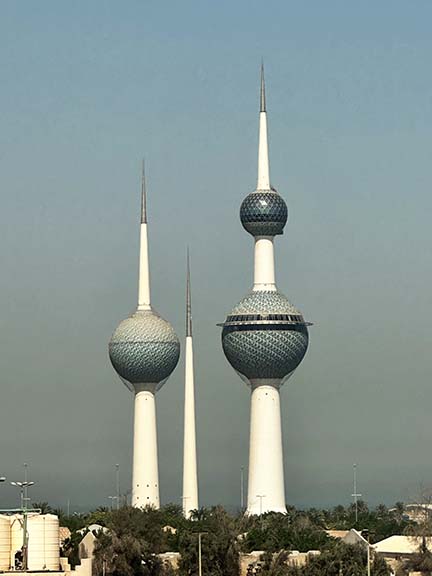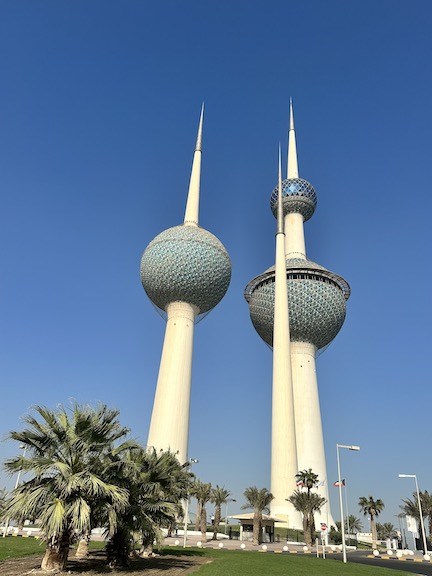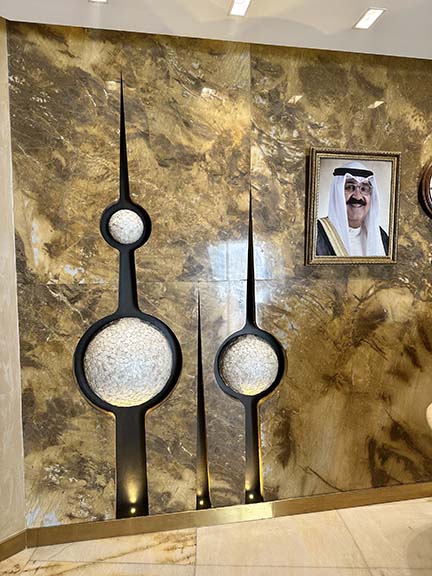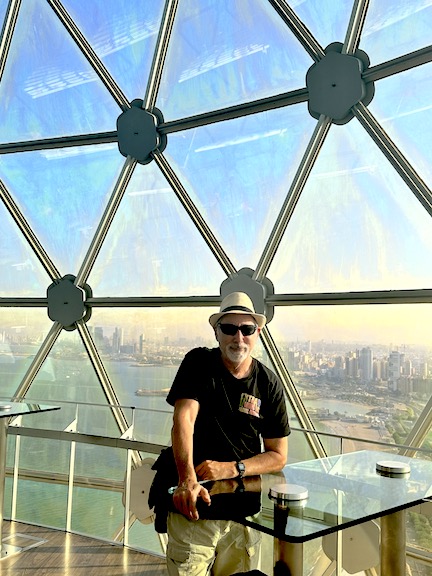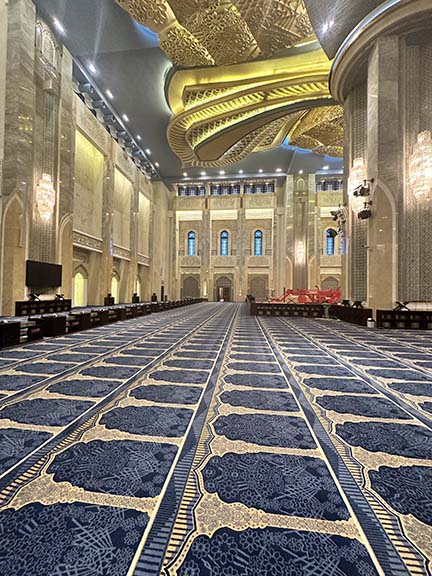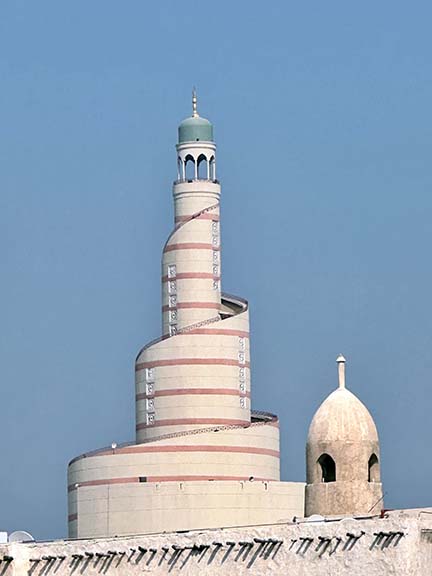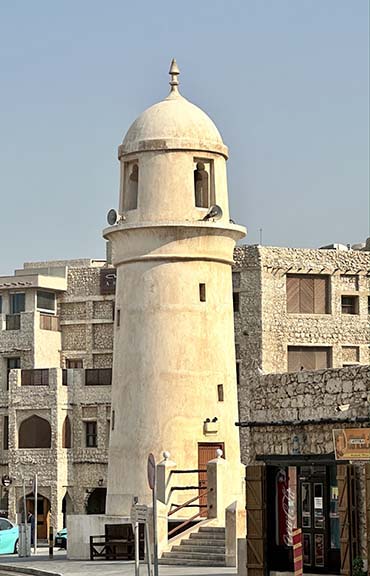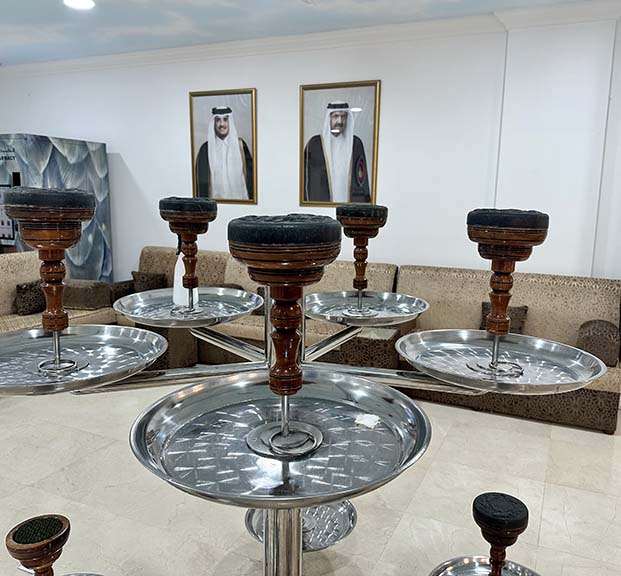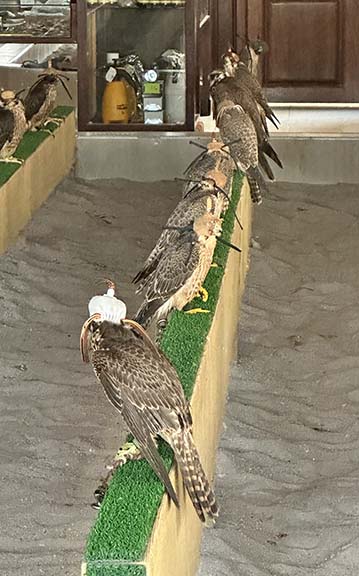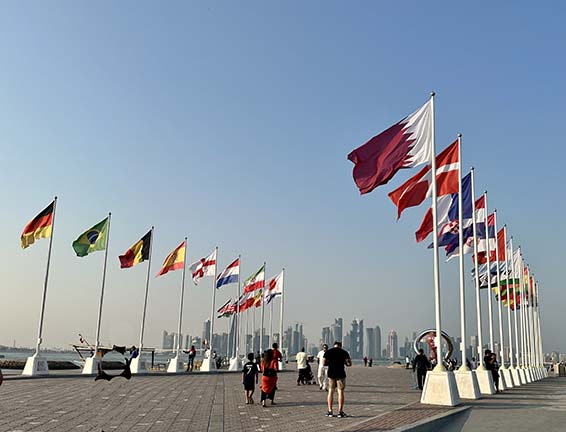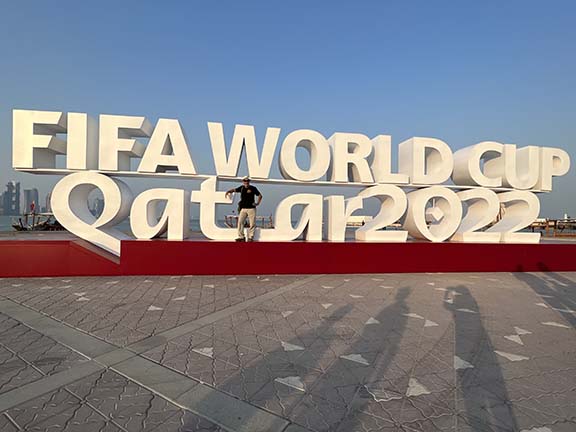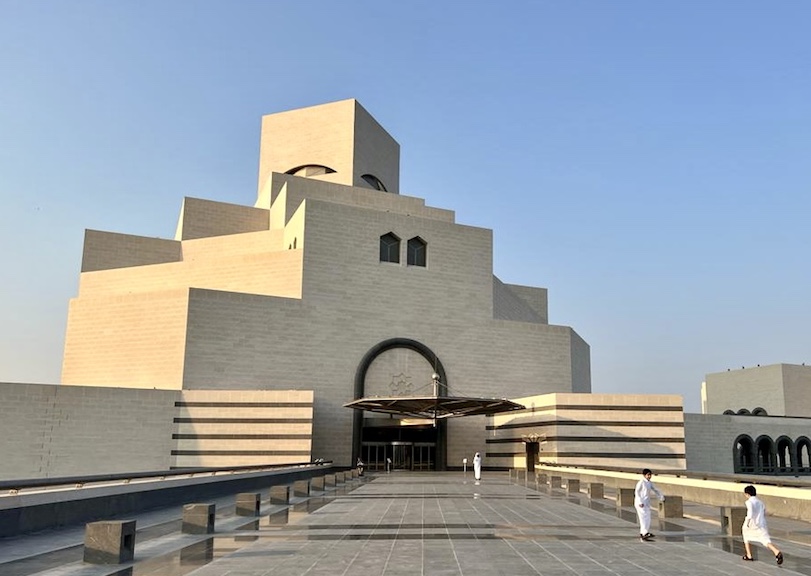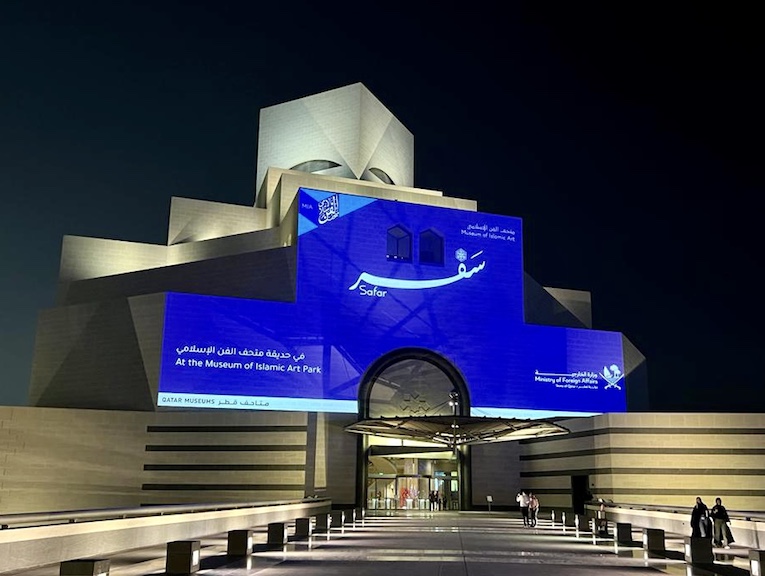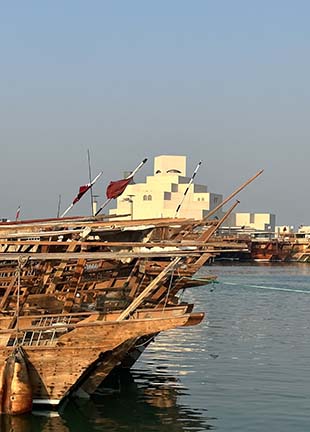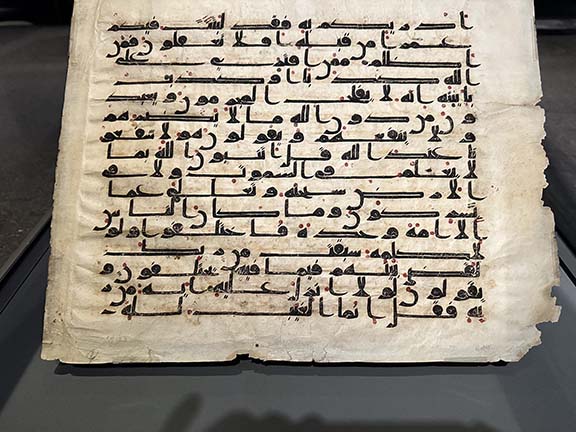
Inspired by the achievements of the other conference attendees, I feel the need to up my country count. I am still missing three to complete the Middle East.
From Yerevan, we first fly to Dubai and then to Bahrain, an island kingdom located off the Arabian coast. It is a tiny country, one-quarter the size of Rhode Island, and miniscule in comparison to Saudi Arabia to which it is connected by a causeway and which is over three times the size of Texas. Its airport is, as typical of the region, very sleek and modern. We arrive at night so there’s no much to see on the way in except the bright lights and skyline of the captial, Manama.
Bahrain has one of the strongest currencies in the world, one dinar being worth $2.65, which is reflected in the price levels. The hotel room mini-bar price list is illustrative: soft drinks $8.58, a miniature of liquor $31.80. There tourism sector here consists mostly of Saudis driving over to purchase alcohol.
Next door to our hotel is the old government building, nicely lit up. Behind is the souk, alive with foreign workers that comprise a majority of the populace.
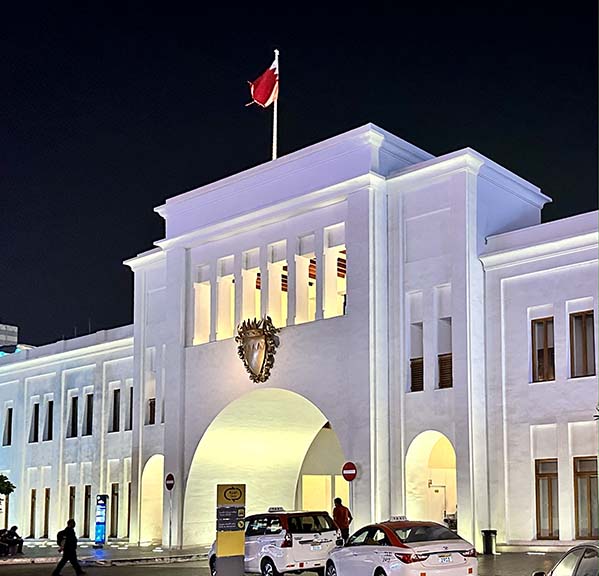
We only have one full day here. We start out with the Grand Mosque, where appriately modest attire is provided for visitors. At the entrance is a cautionary sign: “photography is permitted but no funny poses.”
|
|
|
There is not much to see or do in the modern city. The main attraction is shopping malls, of which there are many, and which I have no desire to visit. Just outside of the city is Bahrain Fort. The site has been occupied for some 5000 years, the latest construction having been built by the Portuguese in the 16th century. Our visit extends into the evening.
|
|
|
|
|
|
|
|
Next day we fly to Muscat, capital of Oman. Not much has changed since I was here fifteen years ago. The always-sunny weather makes for nice colors along the corniche.
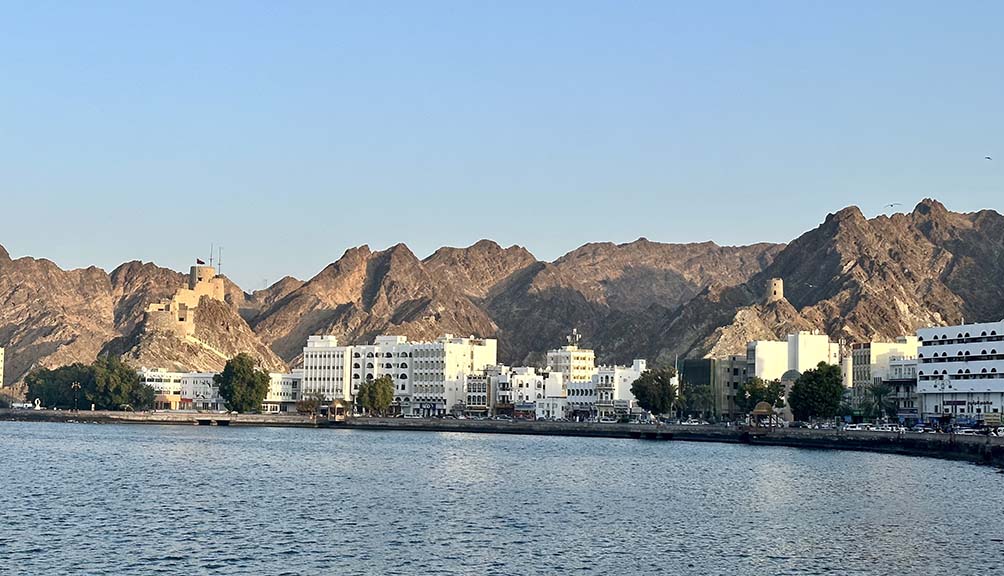
Our hotel is near the fish market
|
|
|
The principal sight in Muscat is the royal palace, official residence of Sultan Qaboos, “The Dearest and Purest of Men”, who reigned for fifty years until his death in 2020.
|
|
|
|
|
|
|
|
|
|
Across the way is the National Museum. Its exhibits range from the oldest man-made object found on the Arabian peninsula — a 2 million year-old hand axe — to objects d’art, to the Guiness-certified World’s Largest Dagger.
|
|
|
|
|
Dinner is a restaurant across from the fish market. You select what you what and they prepare it for you in the manner you choose.
|
|
|
Because this is a quick visit, there is no time to explore the rest of the country.
Our next destination is Kuwait, another flight away. My entry visa, although in English, reads right-to-left as does written Arabic.

Upon arriving we get a rude reception. We breeze past the immigration counter to baggage claim where my suitcase is already on the inspection table. Kuwait is strictly dry; they X-ray incoming luggage and have identified bottles in mine. They proceed to confiscate my Georgian wine, Armenian brandy, and duty-free bourbon. Not since when I went to Libya! This injury is followed by the insult of a strip search. The topper is that the receipt (in Arabic) I am handed lists only one item. So, my question is do the customs officers sell the rest or just drink it themselves?
Not surprisingly, Kuwait has little if any tourism. The most iconic image is of the Kuwait Towers, nicely illuminated and visible from our hotel room.
|
|
|
One is actually a water tower and other other holds a viewing deck and restaurant.
|
|
|
|
|
If you remember Kuwait at all it is likely the 1990 invasion and occupation by Iraq that lead to the First Gulf War. Well, there are no reminders of that to be seen, though I read that there are a couple of monuments outside of Kuwait City proper.
There is not a whole lot else to see. As befitting a wealthy country, the Grand Mosque is very richly-decorated. In response to my question, the guide explains that during the Iraqi occupation its name was changed to “the Saddam Mosque.”
|
|
|
|
|
We opt for dinner in the souq. Even though the Kuwaiti dinar is the most valuable unit of currency in the world (1 dinar = $3.26), the price level is no worse than elsewhere. Still, ever budget-minded, I opt for “no brains.”

After Kuwait is Qatar, the final country on this trip (UN count #157). It’s not a great distance from Kuwait but still another flight away. As home base for the mega-carrier Qatar Airways, the airport at Doha is world-class.
Qatar is getting ready to host the World Cup in a month or so. This is never a cheap place, but prices will soon become eye-wateringly high. Our hotel is across from the souq and affords a view of the spiral minaret of the mosque at the Islamic Cultural Center.
|
|
|
|
|
Although the penninsula has occupied since antiquity, there is nothing old to see; everything is modern or reconstructed. Things you do not see everyone else are the falcon souq and falcon hospital.
|
|
|
|
|
Nearby is the camel market, in front of which mounted troops are practicing for the upcoming festivities.
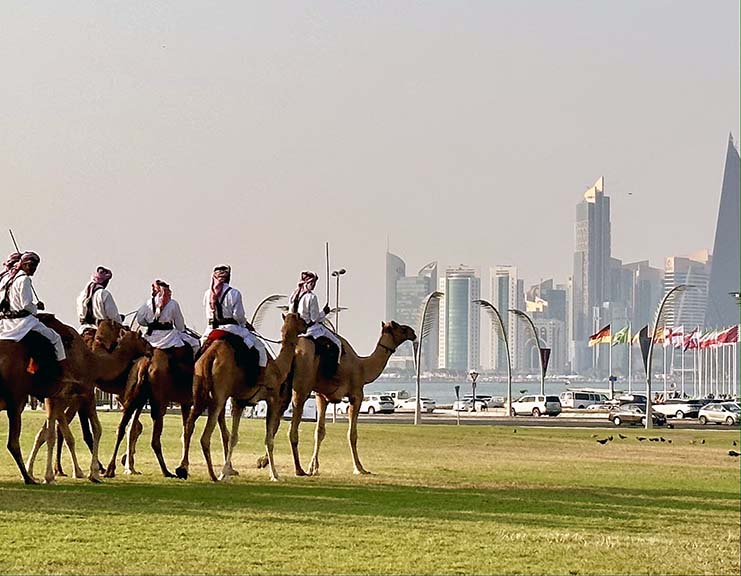
And the corniche is decked out to welcome the soccer attendees.
|
|
|
Our final stop is the Museum of Islamic Art, Qatar’s premier tourist attraction, housed in a spectacular building.
|
|
|
It does not have a huge quantity of exhibits, but what they do have is best of the best.
|
|
|
|
|
Doha boasts more than one skyline.

That's it. It's been a month. Seven countries. My middle-east map is full. Mercifully, the flight back to the US is non-stop.
Trip date: September-October 2022
